The inhabitants of a composable world naturally have aligned incentives, as they all reap the rewards of their growth.
Autonomy
Because their logic exists on-chain, projects built in a composable world reduce centralization risk because (when mature) they are not subject to centralization The impact of institutional whims.
The composable world in products
Now we understand With the literal functionality of composable worlds out of the way, let’s see how they perform in practice.
To do this, we will explore three of them: Downstream, Briq, and PixeLAW.
Downstream ?
TLDR:
Downstream is an on-chain MMO created by Playmint.
"Downstream" is developed using a custom engine, based on Hexwood (Translator's Note: a fantasy novel created by British writer Deanna Wan Jones, published in 1993 Published in 2011. This book is famous for its complex plot, unique setting and profound themes. The story takes place in a mysterious forest called Hexwood, and involves time travel, virtual reality, political conspiracy and other themes. .It mainly follows a boy named Mordion who is drawn into the center of the mystery of Hexwood and joins other characters to explore the secrets of this mysterious place) as the background, it is a place full of (surprise, surprise) hexagons 3D world.

Take a look at Hexwood
Hexwood is ruled by an AGI named MORTON , his goal is to develop his territory through the use of woodland creatures called "units".
When you play Downstream , you will become one of these unit s, where you will be able to explore, fight, build, complete quests, and more .
Downstream attaches great importance to composability.
For example, players can design and deploy structures in Hexwood through the in-game UI, and the process does not require writing code, meaning anyone can easily make it happen.
Currently players can sign up for Waitlist via email, but Downstream is still under development.
Composability example:
Downstream Compositionality extends not just to creating user-generated structures, but to entire games and experiences.
A prime example is Tonk Attack, a game built in Downstream by the aforementioned Tonk team.
Tonk Attack is similar to the on-chain version of "Among Us".
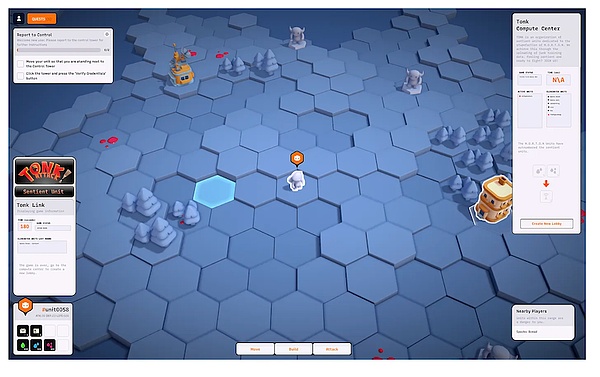
"Tonk Attack Trailer"
In the game, the player's goal It is to overthrow MORTON by forming an alliance (called the "Tonk Alliance") to destroy AGI's training data.
However, MORTON is not a person who is easily defeated.
They will attempt to counter this coup by brainwashing a player's unit to make them rebellious and attempt to kill Alliance members.
Just like human society, players must identify and defeat this brainwashed unit.
"Tonk Attack" is about to start game testing.
Although public footage is limited, the game's GitHub provides clues on how to take advantage of Downstream's composability.

I guess this is the rogue Tonk
For example, players can enter Hexwood by Inside a structure called the Botnet Tower, then craft a "Tonk Item" to access the game.
I was excited to try Tonk Attack and thought it was a very interesting use of Downstream's composability.
Briq ?
TDLR:
Briq is an on-chain protocol based on Starknet (as of early December 2023) built on Dojo.
In Briq, users can create objects, games, or experiences in a 3D voxel world using blocks called briqs.
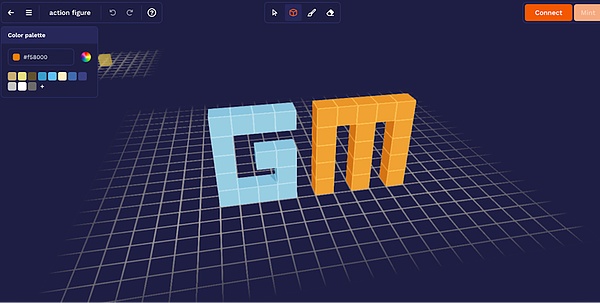
Briq UI, and my rough design
Accessible to anyone Briq and start creating, no wallet required.
However, users can mint their designs as NFTs, the cost of which depends on the amount of briq used.
Briq is often compared to "Lego on a chain," and for good reason.
Because, in addition to a simple user experience, every object can be assembled, disassembled and reassembled. Additionally, creators can add an instruction manual to show users how to put the design together after purchase.
In summary, this architecture makes Briq highly composable, customizable, and interoperable.
Composability example:
Briq has been started for A variety of different applications provide support (https://briqnft.notion.site/Applications-derivatives-55c548d8c68b443a8b43677cb40b7b44#4471e36d6f8842b38ccdf828be9b2246).
This protocol has been used to create PFP collections such as Ducks Everywhere, a set of 265 different ducks.
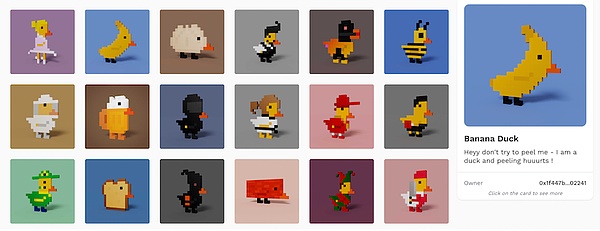
It is also used for other art projects, such as creating portraits for the Realms community and running design contests.
There are also games built with Briq and Unity, including games about traveling through London, riding a spaceship, and racing.
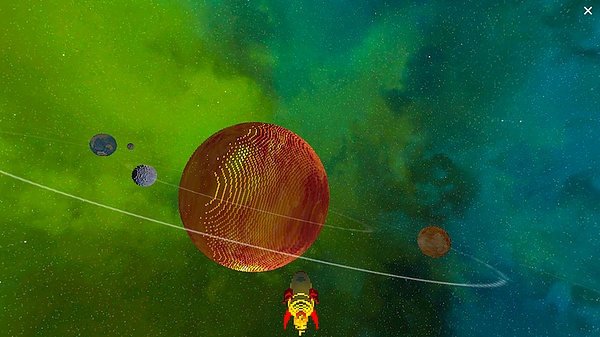
Screen from a spaceship game
Although these games are simple, They demonstrate Briq's ability and potential to become a design primitive for a variety of assets, games, and experiences.
PixeLAW ?
TLDR:
strong>PixeLAW is a primitive built on Starknet based on Dojo.
PixeLAW was conceived during the ETHGlobal Paris Hackathon in July 2023 and consists of a shared grid of pixels.
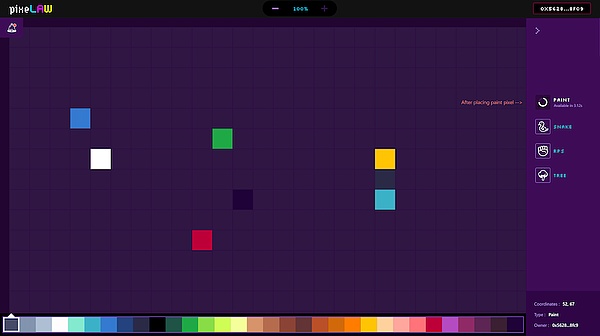
PixeLAW User Interface
Each pixel in the grid has a coordinate and six properties (application, color, owner, text, prompt, and timestamp).
PixeLAW is highly programmable, as developers can adjust the above properties in various ways to create novel games and experiences.
Furthermore, these games can interoperate given that they exist on the same shared grid.
Composability Example:
Already on PixeLAW Developed several games.
These include "Paint" (a game where players can color with pixels), "Snake" (an on-chain version of Snake), and "Rock Paper Scissors" (On-chain version of the “rock, paper, scissors” game in the physical world).
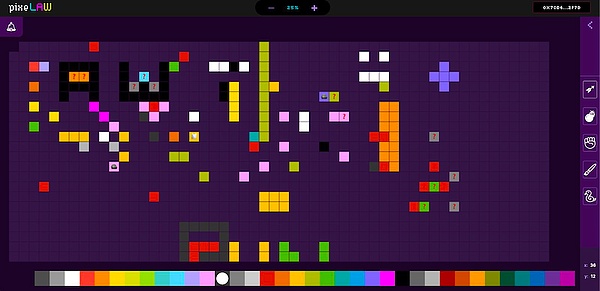
Look at PixeLAW again
However, the most interesting creation I have seen on PixeLAW so far is TicTacToe.
TicTacToe was developed during the ETHGlobal Istanbul Hackathon in November 2023. It is the PixeLAW version of the game of the same name.It uses AI models to realize player interaction with Battle between AI models on the chain.
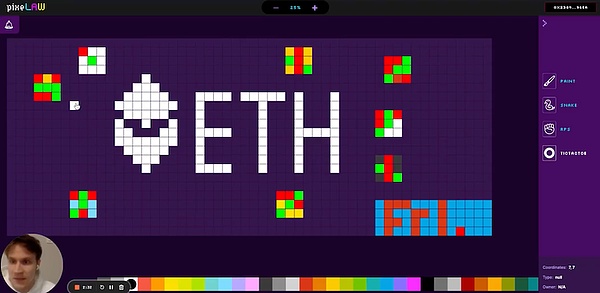
Screenshot of TicTacToe demo during hackathon
PixeLAW’s founding team ( including its co-founder JK) won the first prize of $3,000 from Starknet during the event.
I think TicTacToe is very cool. It shows that PixeLAW can not only be used as a sandbox for experimentation and creation, not only for on-chain games, but also for various applications. Emerging technology exploration.
A new world is rising
As you can see, The potential of a composable world is huge, providing builders with standardization, enhanced composability, network effects, autonomy and more.
Additionally, these benefits are being used today in games, art, PFP, and more in worlds like Downstream, Briq, and PixeLAW.
We're just getting started, because as these worlds develop and grow over the next few years, we'll likely see many novel experiences created and projects relationships are formed.
All in all, I'm really excited about tracking the progress of composable worlds.
(Partial) quote from Tony Montana:
“The *composable* world is yours."

What will you build in it?
Original link: https://wasd.mirror.xyz/8DOt57io49L8-4-PeRIayC0K7fzWx-OZSZ6-uXlq1oM
 JinseFinance
JinseFinance


















